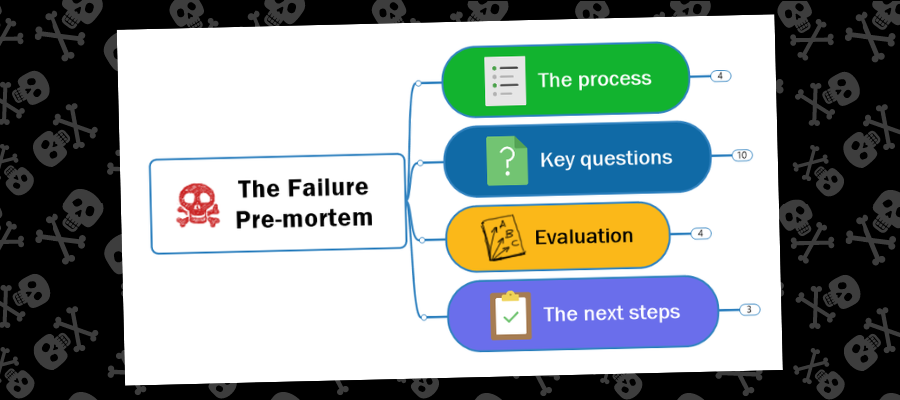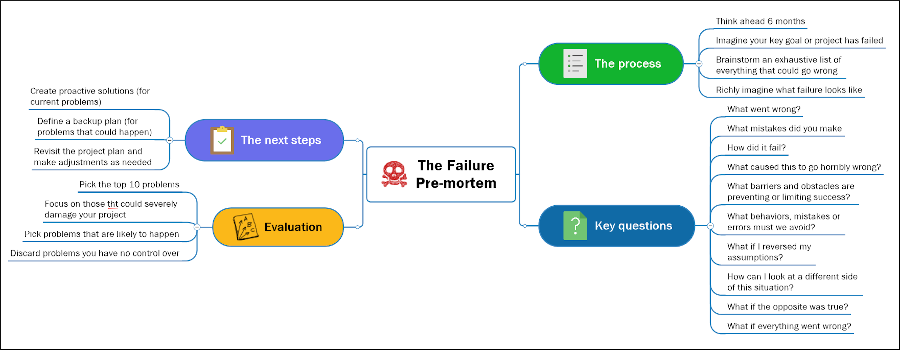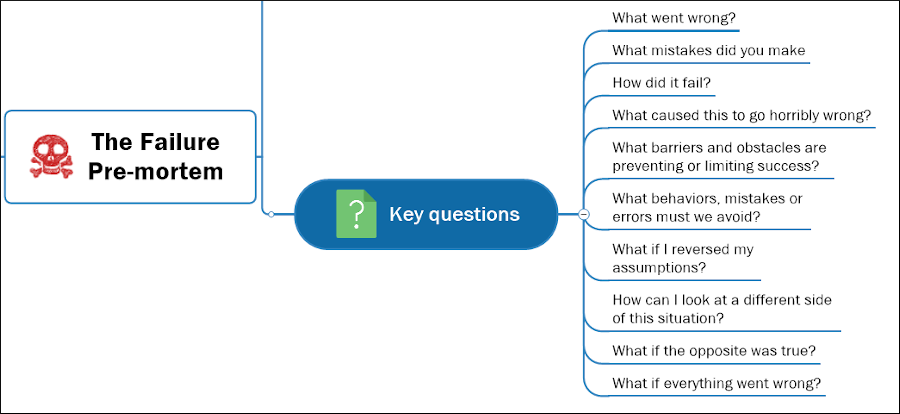
Several times on this blog, we’ve talked about reverse engineering your future. In other words, imagining an ideal future and then working backward to the present to figure out the steps you’d need to take to get there. Little did I realize that this thinking technique is actually used in project management for risk mitigation. In this context, it’s called a “failure pre-mortem.”
We’re all quite familiar with a post-mortem – analyzing something after it happened. A failure pre-mortem helps project teams to identify and prevent potential obstacles and failure modes that aren’t obvious when they’re using their habitual mode of thinking to plan ahead.
Another problem team members face is the pressure to keep the project moving. They may have some misgivings but may feel afraid to express them, for fear that their boss or coworkers might look down on them. Even if they don’t have any lingering concerns about the project, it’s easy to get carried along by groupthink.
A failure pre-mortem gives team members permission to brainstorm and express all potential problems and risks, no matter how far-fetched. It’s a safe place to ask “What if everything went wrong?”
How it works

(click to display larger version)
Gary Klein, the developer of this technique, describes a three-step process to perform a failure pre-mortem:
Step 1: “A typical pre-mortem begins after the team has been briefed on the plan. The leader starts the exercise by informing everyone that the project has failed spectacularly. Over the next few minutes those in the room independently write down every reason they can think of for the failure—especially the kinds of things they ordinarily wouldn’t mention as potential problems, for fear of being impolitic,” he instructs.
Step 2: Next, the leader asks each team member to read one reason from his or her list, while someone records them. A mind map is ideal for this purpose. This process continues until all have been recorded.
Step 3: The team can then discuss them, prioritize them and make plans to mitigate those that are most likely to occur. All of this detail, including the prioritization, can be visually captured in the mind map, in as much detail as needed. Tasks can be assigned to team members and resources allocated. A mind map can help to promote shared understanding in ways that a set of flipchart pages or notes scribbled on a whiteboard cannot.

Klein says a failure pre-mortem not only helps to surface potential problems that can’t be identified any other way, it also has several other benefits. It helps to prevent what he describes as the “damn-the-torpedoes attitude often assumed by people who are overinvested in a project,” teaches team members to respect their hunches and each others’ judgment and “sensitizes the team to pick up early signs of trouble once the project gets under way.”
The bottom line is that a future pre-mortem can increase your team’s odds of project success – and eliminate the need for a painful autopsy after a failed project.

Leave a Reply